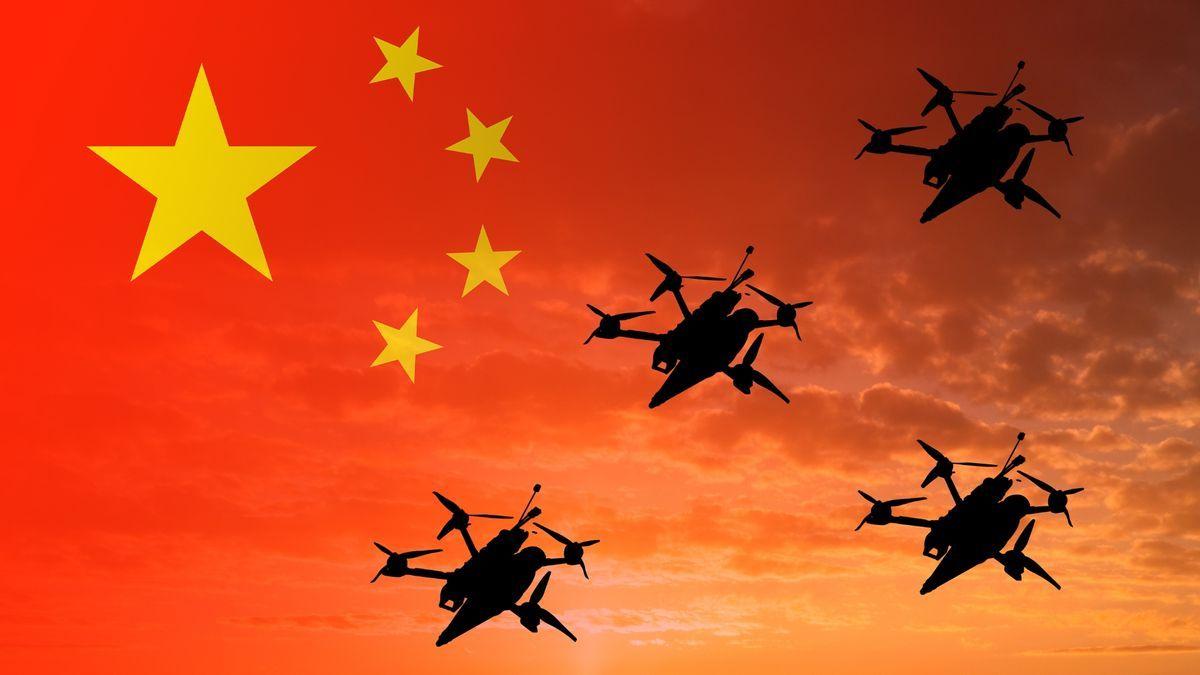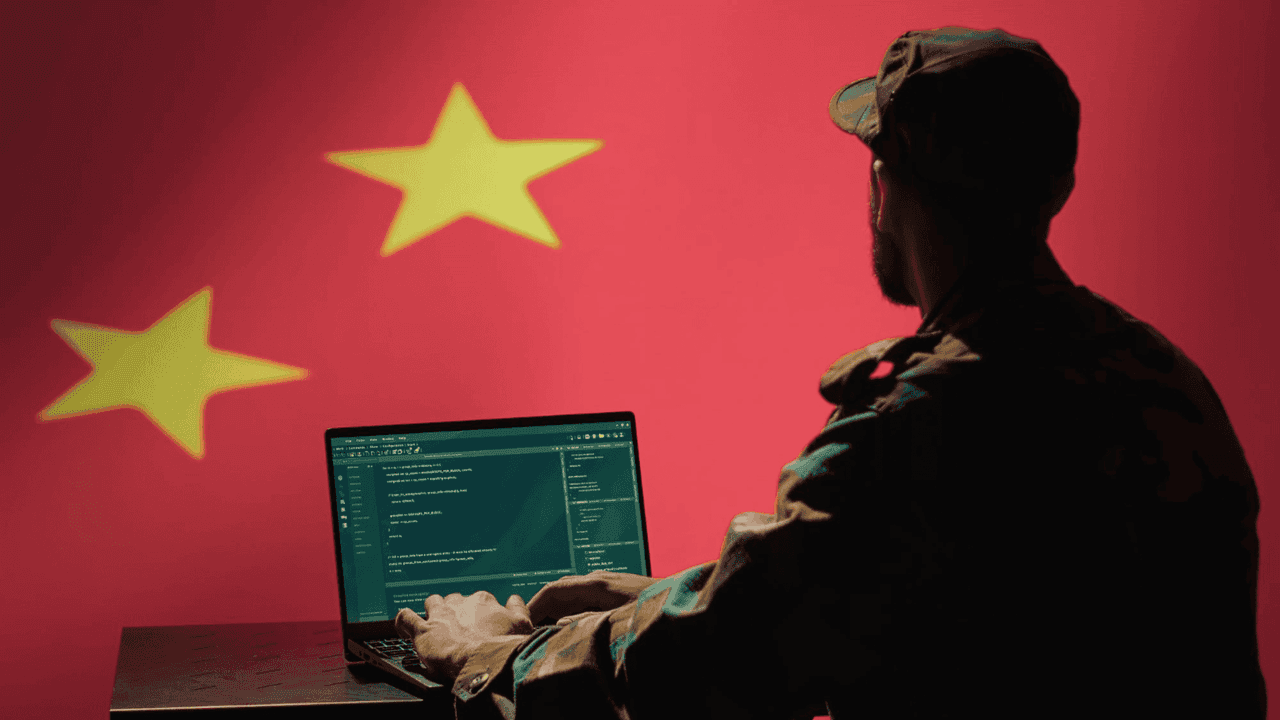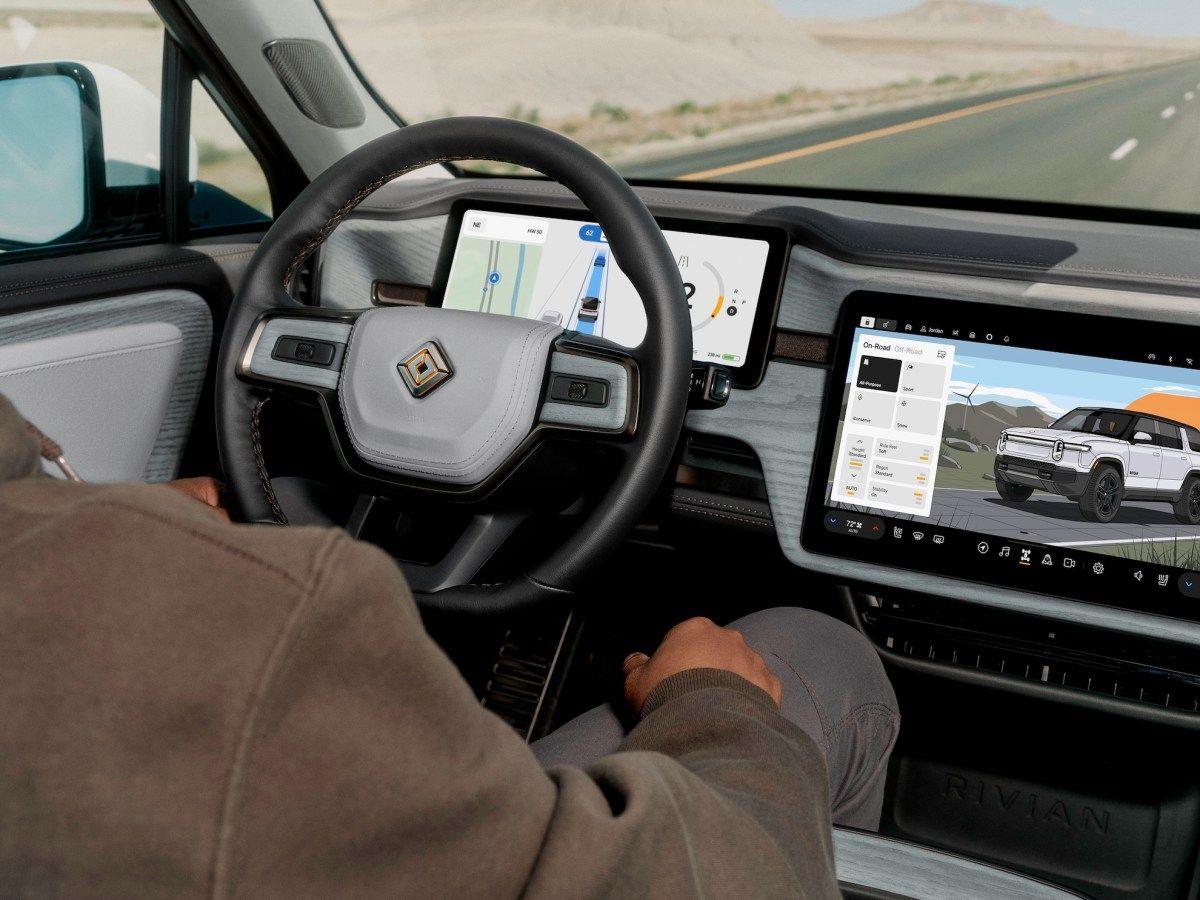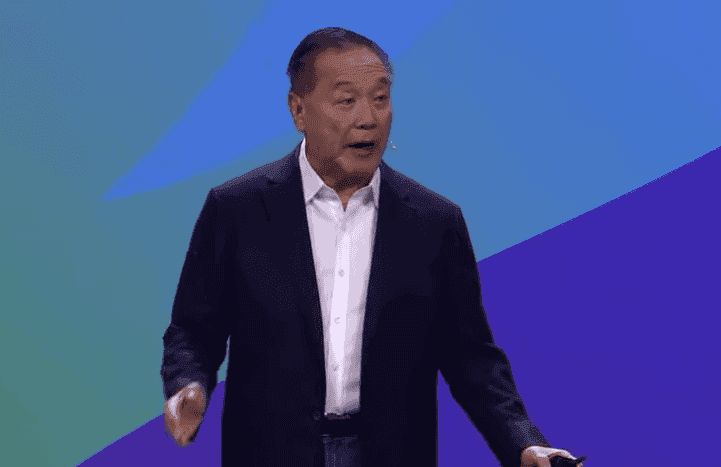China's Military AI Advancements: DeepSeek-Powered Autonomous Vehicles and Nvidia Chip Reliance
3 Sources
3 Sources
[1]
China's autonomous military combat drone powered by DeepSeek highlights Nvidia reliance -- investigation reveals People's Liberation Army, supporting institutions continue to use restricted H100 chips
China North Industries Corporation, or Norinco, a state-owned defense firm, earlier this year unveiled the P60, an autonomous military vehicle that can travel at 50 kilometers per hour (approximately 31 miles per hour) and features autonomous combat-support capability. According to Reuters, the drone is powered by DeepSeek, but details about it remain a state secret. However, the publication dived deep into procurement records and patents, which suggest the continued use of Nvidia AI GPUs by the Chinese People's Liberation Army (PLA) and the various institutions that support it. The U.S. has restricted the export of its most advanced AI chips to China since 2022, only allowing Nvidia and AMD to ship versions that are significantly less performant than their top-of-the-line models. Despite that, there's reportedly still a healthy black market for chips like the Nvidia H100, which, although prohibited from export to China in the U.S., isn't illegal to obtain in the East Asian nation. Still, Beijing is pushing for its own homegrown chips, and it has even banned some of its biggest tech companies from acquiring them, saying that the performance of domestic semiconductors can already match Nvidia's H20 and RTX Pro 6000D AI GPUs. Despite Beijing's recent ban, 35 of the patents that Reuters discovered, most of them filed by the National University of Defense Technology (NUDT) and other educational institutions that conduct research for the Chinese military, mentioned the use of Nvidia's A100 chips. One patent was filed as late as June of this year, although it's unknown whether the AI GPUs used in it were acquired before or after Washington's export controls. On the other hand, a further 15 patents noted the use of Huawei Ascend chips, showing China's progress in making its own AI GPUs. DeepSeek, the AI tool used in Norinco's vehicle, was also suspected to have been trained on Nvidia AI GPUs, although the company's latest model now supports Huawei's chips and its CANN software toolkit. The report says that the PLA "and affiliates continue to use and look for Nvidia chips," including models currently under Washington export controls. "China has more than enough domestic chips for all of its military applications, with millions to spare," Nvidia told Tom's Hardware in a statement. "While we can't track individual resales of products sold years ago, recycling small quantities of old, second-hand products doesn't enable anything new or raise any national security concern. Using restricted products for military applications would be a nonstarter, without support, software, or maintenance." China isn't the first country to experiment with and employ AI for its military. In fact, a U.S. defense startup is already working on an AI-powered drone killer, Sweden is experimenting with an AI drone swarm, and Russia is allegedly field-testing an AI-powered drone. AI technologies will allow warfare to become more efficient, with Chinese researchers saying that planning and assessment, which often takes 48 hours by a team of military planners, can now be completed in a matter of seconds. Despite that, its top leaders say that humans will maintain control of its weapons systems, especially as we cannot say with 100% accuracy how reliable these systems could be. We've seen this countless times in Hollywood movies, and even in one USAF test, in which the simulated AI drone turned on its human operator to accomplish its mission regardless of the consequences.
[2]
Robot dogs and AI drone swarms: How China could use DeepSeek for an era of war
The Norinco P60's release was touted by Communist Party officials in press statements as an early showcase of how Beijing is using DeepSeek and AI to catch up in its arms race with the United States, at a time when leaders in both countries have urged their militaries to prepare for conflict. China's state-owned defense giant Norinco in February unveiled a military vehicle capable of autonomously conducting combat-support operations at 50 kilometres per hour. It was powered by DeepSeek, the company whose artificial intelligence model is the pride of China's tech sector. The Norinco P60's release was touted by Communist Party officials in press statements as an early showcase of how Beijing is using DeepSeek and AI to catch up in its arms race with the United States, at a time when leaders in both countries have urged their militaries to prepare for conflict. A Reuters review of hundreds of research papers, patents and procurement records gives a snapshot of the systematic effort by Beijing to harness AI for military advantage. Specifics of how the systems behind China's next-generation weapons work and the extent to which it has deployed them are a state secret, but procurement records and patents offer clues into Beijing's progress toward capabilities like autonomous target recognition and real-time battlefield decision support in a way that mirrors U.S. efforts. Reuters couldn't establish if all the products had been built and patents don't necessarily indicate operational technology. The People's Liberation Army (PLA) and affiliates continue to use and look for Nvidia chips, including models under U.S. export controls, according to the papers, tenders and patents. Reuters could not determine if those chips were stockpiled before Washington imposed restrictions as the documents do not detail when the hardware used was exported. Patents filed as recently as June show their use by military-linked research institutes. In September 2022, the U.S. Commerce Department banned exports to China of Nvidia's popular A100 and H100 chips. Nvidia spokesman John Rizzo said in a statement to Reuters that while the firm can't track individual resales of previously sold products, "recycling small quantities of old, second-hand products doesn't enable anything new or raise any national security concern. Using restricted products for military applications would be a nonstarter, without support, software, or maintenance." The U.S. Treasury and Commerce Department did not respond to questions about Reuters' findings. The Chinese military has also in 2025 increased its use of contractors that claim to exclusively use domestically-made hardware like Huawei AI chips, said Sunny Cheung, a fellow at the Washington-based Jamestown Foundation defence policy think-tank, who analysed several hundred tenders issued from the PLA Procurement Network over six months this year. Reuters couldn't independently confirm his assertion but the shift would coincide with a public pressure campaign by Beijing on domestic firms to use China-made technology. The news agency's review of procurement notices and patents filed to China's patent office found demand for and use of Huawei chips by PLA affiliates, but it was not able to verify all the tenders seen by Jamestown, which is releasing a report this week that it provided early to Reuters. Huawei declined to comment when asked about military deployment of its chips. The Chinese defence ministry, DeepSeek, and Norinco did not return requests for comment about their use of AI for military applications. The universities and defence firms that filed the patents and research papers seen by Reuters also did not respond to similar questions. DeepSeek dependence Usage of DeepSeek models was indicated in a dozen tenders from PLA entities filed this year and seen by Reuters, while just one referenced Alibaba's Qwen, a major domestic rival. Alibaba didn't return a request for comment about military use of Qwen. DeepSeek-related procurement notices have accelerated throughout 2025, with new military applications appearing regularly on the PLA network, according to Jamestown. DeepSeek's popularity with the PLA also reflects China's pursuit of what Beijing calls "algorithmic sovereignty" - reducing dependence on Western technology while strengthening control over critical digital infrastructure. The U.S. Department of Defense declined to comment about the PLA's use of AI. A State Department spokesperson said in response to Reuters' questions that "DeepSeek has willingly provided, and will likely continue to provide, support to China's military and intelligence operations." Washington will "pursue a bold, inclusive strategy to American AI technology with trusted foreign countries around the world, while keeping the technology out of the hands of our adversaries," the spokesperson added. AI-powered planning and applications China is looking at AI-powered robot dogs that scout in packs and drone swarms that autonomously track targets, as well as visually-immersive command centres and advanced war game simulations, according to the documents. In November 2024, the PLA issued a sci-fi-esque tender for AI-powered robot dogs that would scout together for threats and clear explosive hazards. Reuters couldn't identify if the tender was fulfilled. China has previously deployed armed robot dogs from AI robotics manufacturer Unitree in military drills, according to images released in state media. Unitree didn't respond to queries about its PLA work. The review of patents, tenders and research papers published in the past two years shows how PLA and affiliated entities are looking to AI to improve military planning, including developing technology to quickly analyse images taken by satellites and drones. Researchers at Landship Information Technology, a Chinese company that integrates AI systems into military vehicles including Norinco's, said in a February white paper released to promote their services that its technology built on Huawei chips can rapidly identify targets from satellite imagery, while coordinating with radars and aircraft to execute operations. The time taken for military planners to shift from finding and identifying a target to executing an operation has also been shortened by AI, according to Xi'an Technological University. Researchers at that institute said in a summary of their findings released in May that their DeepSeek-powered system was able to assess 10,000 battlefield scenarios - each with different variables, terrain, and force deployments - in 48 seconds. Such a task would have taken a conventional team of military planners 48 hours to complete, they said. Reuters could not independently verify the researchers' claims. Autonomous weapons Chinese military entities are investing in increasingly autonomous battlefield technology, the documents suggest. Two dozen of the tenders and patents seen by Reuters show the military attempting to integrate AI into drones so they can recognize and track targets, as well as work together in formations with little human intervention. Beihang University, known for its military aviation research, is using DeepSeek to improve drone swarm decision-making when targeting "low, slow, small" threats - military shorthand for drones and light aircraft - according to a patent filing this year. Chinese defence leaders have publicly committed to maintaining human control over weapons systems amid growing concern that a conflict between Beijing and Washington could lead to the unchecked deployment of AI-powered munitions. The U.S. military, which is also investing in AI, is aiming to deploy thousands of autonomous drones by the end of 2025 in what officials say is an attempt to counter China's numerical advantage in unmanned aerial vehicles. US chips, Chinese models Chinese defence contractors like Shanxi 100 Trust Information Technology have touted in marketing materials their reliance on domestically produced components like Huawei's Ascend chips, which allow AI models to operate. The firm didn't respond to questions about its relationship with Huawei and the PLA. Despite the move to domestic processors, Nvidia hardware continues to be frequently cited in research by military-affiliated academics, according to a review of patent filings from the past two years. Reuters identified 35 applications referencing use of Nvidia's A100 chips by academics at the PLA's National University of Defense Technology (NUDT) and at the "Seven Sons" - a group of Chinese universities under U.S. sanctions and with a history of conducting defence-related research for Beijing. Those entities in the same time period filed 15 patents related to AI applications that cited Huawei Ascend hardware, which was designed as a substitute to Nvidia chips. As recently as June, the PLA Rocket Force University of Engineering separately filed a patent for a remote-sensing target detection system, which it said used A100 chips for model training. Senior Col. Zhu Qichao, who leads a NUDT research centre, told Reuters last year that U.S. restrictions have impacted their AI research "to some degree," though they are determined to narrow the technological gap. Nvidia's Rizzo played down PLA demand for Nvidia's hardware, saying that China "has more than enough domestic chips for all of its military applications."
[3]
Robot dogs and AI drone swarms: How China could use DeepSeek for an era of war
Chinese state-owned defense giant Norinco in February unveiled a military vehicle capable of autonomously conducting combat-support operations at 50 kilometers per hour. It was powered by DeepSeek, the company whose artificial intelligence model is the pride of China's tech sector. The Norinco P60's release was touted by Communist Party officials in press statements as an early showcase of how Beijing is using DeepSeek and AI to catch up in its arms race with the United States, at a time when leaders in both countries have urged their militaries to prepare for conflict. A review of hundreds of research papers, patents and procurement records gives a snapshot of the systematic effort by Beijing to harness AI for military advantage.
Share
Share
Copy Link
China unveils an AI-powered autonomous military vehicle, highlighting its progress in AI for defense. Despite export restrictions, Chinese military institutions continue to use Nvidia chips, raising concerns about technological dependencies and the global AI arms race.
China's Autonomous Military AI Vehicle and Sovereignty
China's state-owned defense firm Norinco recently unveiled the P60, an autonomous military vehicle capable of 50 km/h for combat-support
1
2
3
. Powered by DeepSeek, a leading Chinese AI company, this highlights China's rapid AI integration into defense2
3
. It reflects Beijing's "algorithmic sovereignty" push: reducing reliance on Western tech and bolstering domestic control over AI infrastructure to gain military advantage in the global AI arms race.
Source: Japan Times
Nvidia Chip Use and Domestic Alternatives
Despite U.S. export restrictions since 2022, China's PLA continues using Nvidia's high-performance GPUs, including restricted H100 and A100 chips
1
2
. Military patents up to June 2025 note persistent usage, challenging export controls1
. Concurrently, China aggressively develops domestic AI hardware, with patents showcasing Huawei Ascend chips1
. Beijing limits foreign chip procurement, asserting domestic semiconductors now rival Nvidia's H20 and RTX Pro 6000D AI GPUs1
.Related Stories
Global Implications and Ethical AI Governance
China's rapid military AI advancements have significant global implications. AI can drastically cut military planning times (48 hours to seconds)
1
, potentially transforming future warfare. Chinese leaders affirm human control over weapons systems1
, addressing ethical concerns on fully autonomous platforms. This underscores the international challenge of balancing innovation with responsible defense AI governance.
Source: Tom's Hardware
References
Summarized by
Navi
Related Stories
DeepSeek: China's AI Breakthrough Sparks Tech Sector Boom and National Pride
05 Feb 2025•Technology

China's PLA Adopts DeepSeek AI for Non-Combat Operations, Raising Speculation About Future Military Applications
24 Mar 2025•Technology

DeepSeek's Success Sparks AI Investment Boom in China
26 Feb 2025•Technology

Recent Highlights
1
OpenAI releases GPT-5.2 AI model after code red memo signals Google Gemini 3 threat
Technology

2
Disney invests $1 billion in OpenAI, licenses 200+ characters for Sora AI video generator
Technology

3
OpenAI faces wrongful death lawsuit after ChatGPT allegedly fueled murder-suicide tragedy
Policy and Regulation





